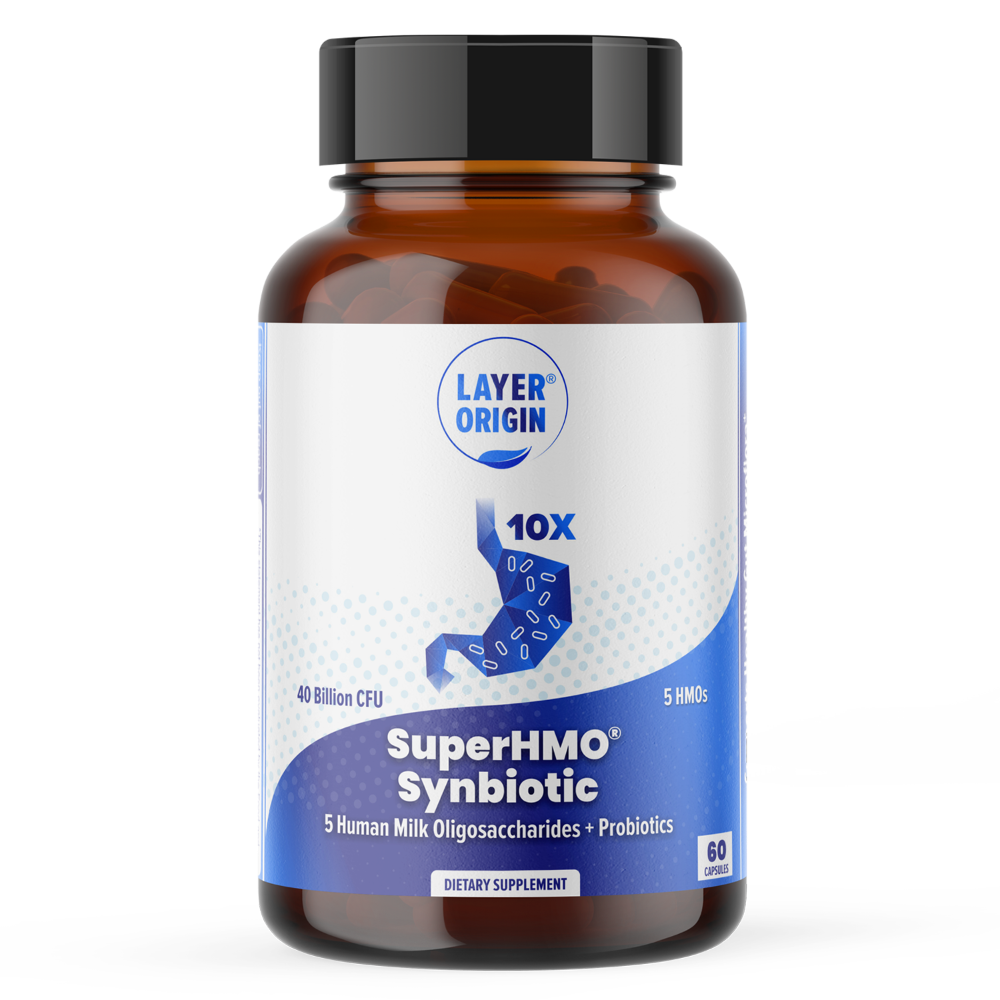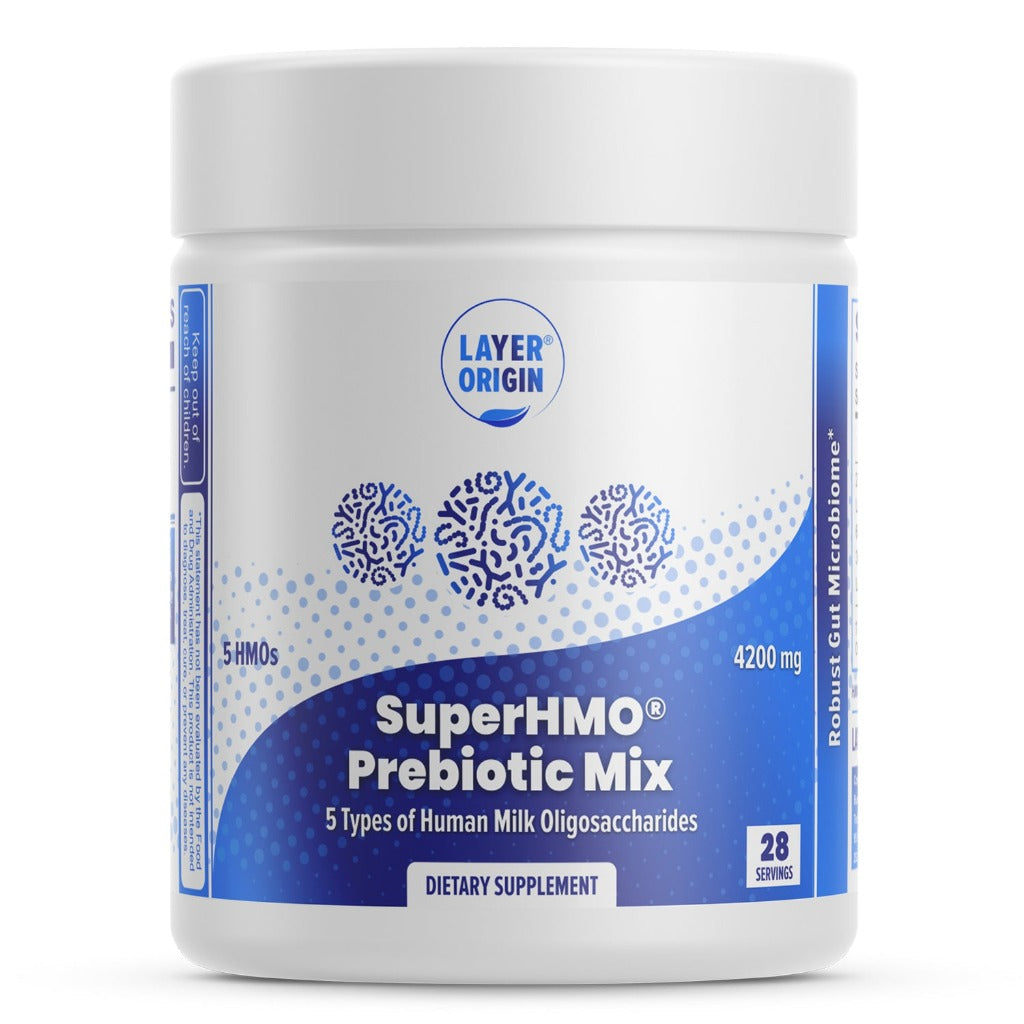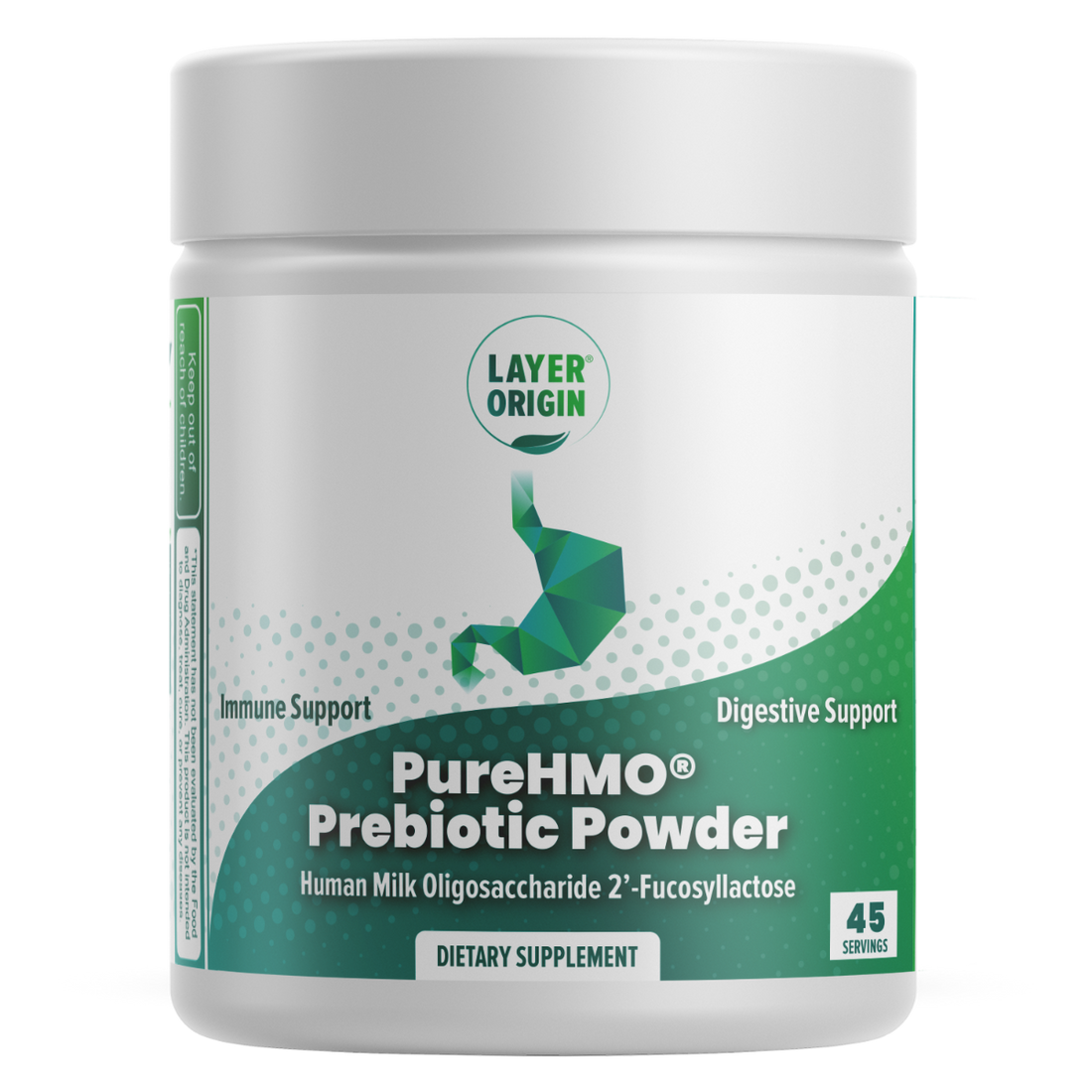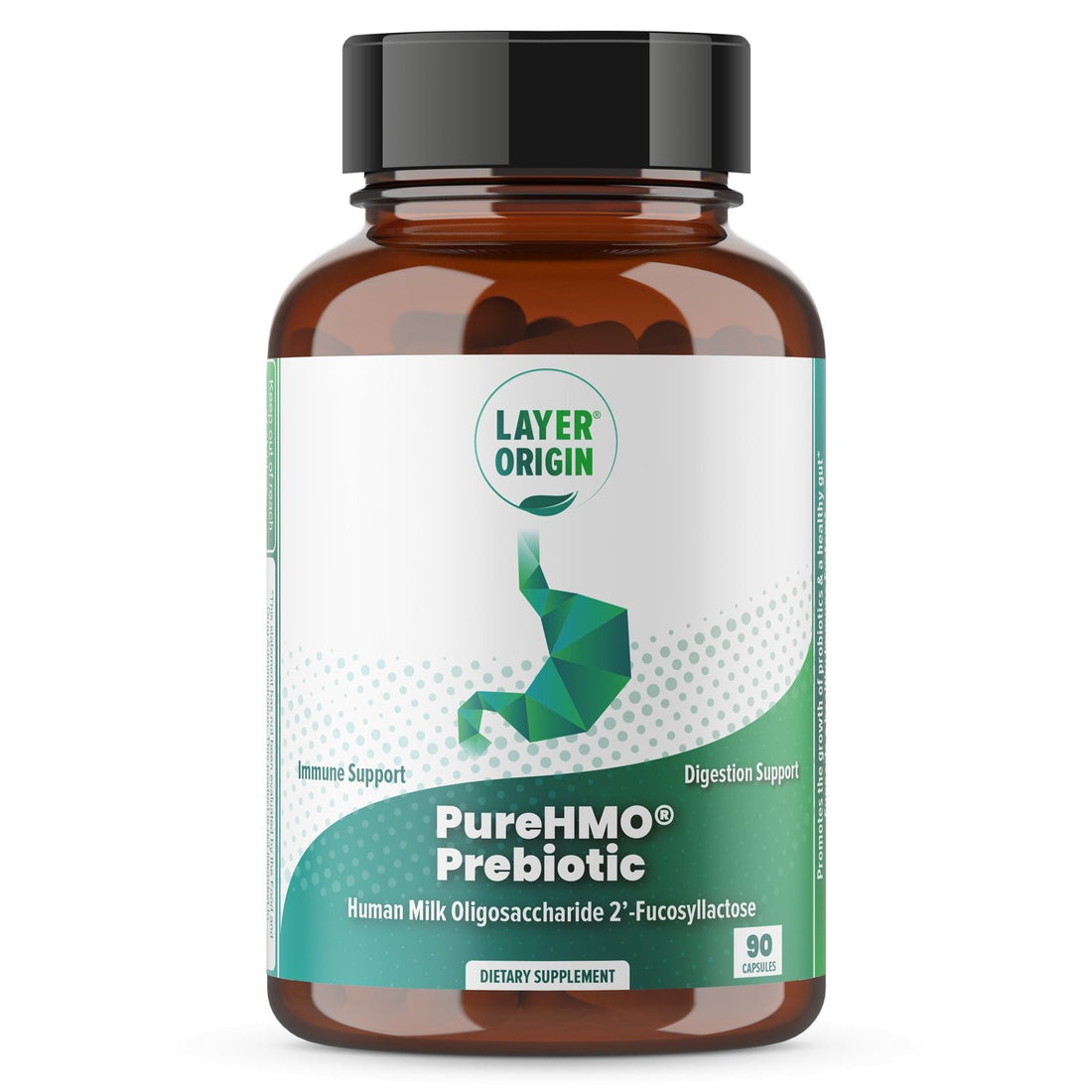Emerging research suggests that specific gut bacteria strains can enhance the body’s natural production of glucagon-like peptide-1 (GLP-1), an important digestive hormone. Here, we explore which microbes and dietary factors drive this process and what the latest research says about leveraging your microbiome for better metabolic health.
Content Outline
-
Akkermansia muciniphila – A Key Player in the Gut–GLP-1 Axis
-
Bifidobacterium species – Modulating GLP-1 via SCFA and HMO Metabolism
-
Lactobacillus species – Probiotic Strains Linked to Higher GLP-1 Levels
-
Emerging GLP-1–Linked Species: Faecalibacterium and Roseburia
-
Prebiotics, HMOs, and Dietary Compounds That Enhance GLP-1-Producing Bacteria
Why GLP-1 Matters for Metabolic and Gut Health
Glucagon-like peptide-1 (GLP-1) has made headlines in recent years thanks to weight loss GLP injections. This gut hormone regulates metabolic health by being released when you eat, helping to control blood sugar, suppress appetite, and slow digestion [1]. Together, these actions help maintain a healthy weight and regulate your blood glucose levels.

Figure 1. How GLP-1 supports metabolic health.
Weight loss injections mimic the effects of GLP-1, supporting you to lose weight if you are obese or overweight [2], but what if you could promote its release in a more natural way?
Emerging research shows that certain gut bacteria can promote the release of GLP-1 through several important mechanisms, including the production of beneficial metabolites, like short-chain fatty acids(SCFAs) that stimulate GLP-1 secretion from colonic cells. Essentially, the concept of a gut-GLP-1 axis is now an active and promising area of research.
Given the interest in GLP-1 weight loss medications and also the gut microbiome, including dietary factors that can manipulate it for the better, supporting beneficial bacteria through diet, prebiotics, or probiotics may be a natural way to boost your body’s own GLP-1 and take advantage of its metabolic effects.
Gut Microbes Directly Linked to GLP-1 Production
Various gut microbes are directly linked to GLP-1 production through several mechanisms, including the fermentation of dietary fiber into SCFAs, which stimulate GLP-1-producing cells. While some strains of bacteria can directly promote the production of GLP-1.
Akkermansia muciniphila – A Key Player in the Gut–GLP-1 Axis
A. muciniphila has attracted attention as a “next-generation probiotic” because of its associations with metabolic health, gut barrier integrity, and anti-inflammatory effects [3], making it a strong candidate as a potent therapeutic intervention for a range of chronic diseases from obesity to dementia. Further to this, recent studies suggest that Akkermansia can also directly stimulate GLP-1 secretion.
Early research found that Akkermansia muciniphila supplements taken over 3 months were a safe and well-tolerated option for improving several metabolic markers, including those for liver dysfunction and inflammation. [4] Animal studies have found that A. muciniphila increases thermogenesis (the process of heat production) and GLP-1 secretion in high-fat diet-induced mice. The researchers found that the probiotic secreted a particular protein called P9 that, on its own, can enhance the secretion of GLP-1 and brown adipose tissue thermogenesis [5].
A more recent study published in 2025 aimed to establish whether bacterial cell extracts of VH muciniphila could stimulate insulin secretion in pancreatic beta cells and GLP-1 secretion in human L-cells – the cells in the gut that are responsible for secreting digestive hormones, including GLP-1 and Peptide YY. The results found that while insulin secretion was modest, the rise in GLP-1 was over 2000% at the highest dose, suggesting that A muciniphila extract could offer substantial metabolic benefits through its ability to enhance the release of GLP-1. [6]
Bifidobacterium species – Modulating GLP-1 via SCFA and HMO Metabolism
Several Bifidobacteria species have been proposed to influence GLP-1 through the fermentation of non-digestible carbohydrates, including human milk oligosaccharides (HMOs). Bifidobacteria are early colonisers of the infant gut and produce SCFAs, like acetate and lactate, which cross-feed other gut inhabitants, including butyrate producers, such as Faecalibacterium prausnitzii.
Two probiotics, namely Lactobacillus paracasei LC-37 (LC-37) and Bifidobacterium animals MN-Gup (MN-Gup), combined with prebiotics, were found to stimulate GLP-1 production, lower fasting blood glucose levels, improve insulin resistance, and regulate the blood fat profile in high-fat diet and streptozotocin-treated rats [7]. Interestingly, a 2022 study found that Bifidobacteria are positively associated with GLP-1 in gestational diabetes and could have therapeutic benefits in these instances [8].
A review by Verma and colleagues (2025) explored how skin-derived Bifidobacterium may influence the production of glucagon-like peptide-1 (GLP-1), a hormone known for regulating blood sugar and protecting cells from damage. Traditionally linked to gut health, Bifidobacterium is now being shown to support skin health and metabolic balance by boosting GLP-1 activity. GLP-1 helps reduce oxidative stress, supports DNA repair, and may slow skin aging. Research also suggests it can improve glucose tolerance and insulin sensitivity, offering potential benefits for diabetes. With new advances in genetic engineering and artificial intelligence, Bifidobacterium-based probiotics could lead to more personalized treatments for both metabolic and skin health.
Lactobacillus species – Probiotic Strains Linked to Higher GLP-1 Levels
Like Bifidobacteria, Lactobacillus strains, such as L. reuteri, L. plantarum, and L. rhamnosus, have been shown in studies to raise GLP-1 levels and improve glucose metabolism.
A study in glucose-tolerant humans published in 2015 demonstrated that daily administration of L. reuteri resulted in a 76% increase in glucose-stimulated GLP-1 and GLP-2 and a 49% rise in insulin compared to placebo [9]. This early study showed that daily probiotic supplementation could be a good therapeutic approach to improving glucose-dependent insulin release.
L. plantarum -pMG36e-GLP-1, a genetically engineered Lactobacillus strain that has been combined with GLP-1, has been shown in studies to relieve diabetes symptoms, modulate the intestinal microbiota, and reduce the inflammatory reaction in the pancreatic tissue, suggesting this engineered bacterial strain could provide a promising solution for type 2 diabetes [10].
Emerging GLP-1–Linked Species: Faecalibacterium and Roseburia
Butyrate stimulates the secretion of GLP-1 by L-cells in the gut [11], a process that can have positive effects on glucose homeostasis, appetite, and metabolic disease status. Faecalibacterium and Roseburia are prolific butyrate producers, so by increasing their abundance, you could have a positive effect on your metabolic health. However, further research is required.
Research into how GLP-1 receptor agonists, like those found in popular weight loss jabs (semaglutide and tirzepatide), has found that F. prausnitzii may be one of the important pathways through which GLP-1 agonists work to regulate glucose in type 2 diabetes. The study found that after just one week of taking a GLP-1 agonist, the abundance of F prausnitzii increased significantly, as shown in Figure 2 [12].

Figure 2. F prausnitzii abundance doubled following the administration of a GLP-1 receptor agonist, leading researchers to believe that this may be one of the ways the medication works to improve glucose tolerance. (Source: Liang et al (2023)).
Prebiotics, HMOs, and Dietary Compounds That Enhance GLP-1-Producing Bacteria
Supporting your gut bacteria through prebiotics, dietary fibre, and human milk oligosaccharides (HMOs) can help boost your body’s natural GLP-1 production. These nutrients feed beneficial microbes such as Akkermansia and Bifidobacterium, promoting short-chain fatty acid release and better glucose balance — a simple, food-first way to enhance metabolic and gut health naturally.

Human milk oligosaccharides
HMOs are complex carbohydrates that are naturally found in breast milk and are continuously being studied for their benefits in adult health. They selectively feed Bifidobacteria and Akkermansia, the same microbes that are associated with GLP-1 enhancement.
Animal studies have found that HMOs, such as 2’fucosyllactose (2’FL), significantly increase glucagon-like peptide-1 (GLP-1) and peptide YY, suggesting positive metabolic benefits [13].
Dietary fiber and polyphenols
Fiber-rich foods like oats, legumes, bananas, onions, and garlic nourish SCFA-producing bacteria that can trigger GLP-1 release. Clinical studies have found that high-fiber diets can improve blood sugar control and keep you feeling satisfied after eating by stimulating the release of GLP-1 on their own.
While polyphenols, plant compounds found in berries, green tea, and cocoa, can support both Akkermansia and Bifidobacteria growth, further enhancing this effect.
Summary
Emerging research suggests that the gut microbiome can play a remarkable role in shaping how the body produces GLP-1, a hormone crucial for managing appetite, blood sugar, and metabolic health. Research has indicated that certain microbes, including Akkermansia muciniphila, Bifidobacterium, and Lactobacillus, can naturally enhance GLP-1 release through several mechanisms.

Nurturing these bacteria doesn’t require medication, just a healthy diet and lifestyle. Prebiotics, including HMOs, dietary fibers, and polyphenols, can all help these beneficial microbes thrive and survive. While more clinical studies are needed, supporting your microbiome through food and targeted supplementation offers a powerful, natural way to complement metabolic health strategies and harness your body’s own GLP-1 potential.
Written by: Leanne Edermaniger, M.Sc. Leanne is a professional science writer who specializes in human health and enjoys writing about all things related to the gut microbiome.








